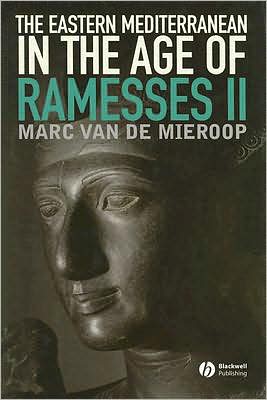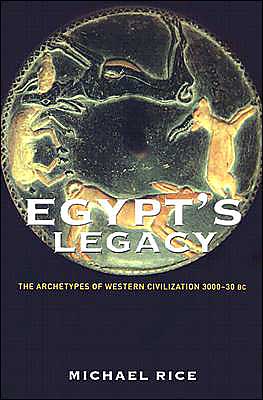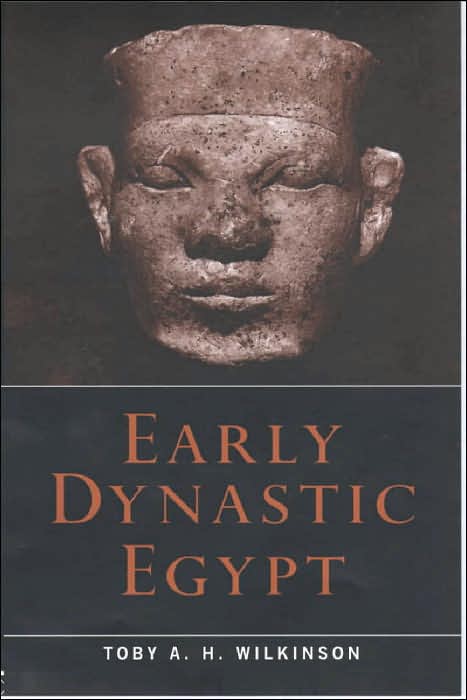You are here
| Size | Seeds | Peers | Completed |
|---|---|---|---|
| 312.69 MiB | 0 | 0 | 0 |
Egyptology Pack 3 (12 eBooks - PDFs)
Lost Egypt Vol. I, II & III: A Limited Edition Portfolio Series of Photographic Images From Egypt's Past
The Epigraphic Survey
RETAIL PRICE $6000 ($2000/each)
These limited edition photographic prints are from the Epigraphic Survey's unique archive of over eight hundred large-format glass plate negatives, which were taken in Egypt between 1880 and 1930, and which provide an extraordinary impression of the land and people of the Nile Valley as they appeared before the onset of the modern era. The prints are of considerable interest as examples of photography produced for early travelers to the Nile Valley, and some bear the signatures of the well-known nineteenth century photographers Zangaki and A. Beato. Production of the series is limited to just 200 copies of each volume.
Vol. I - http://www.amazon.com/exec/obidos/ASIN/0918986885/ejelta5-20

Volume I contains ten prints: Dame turque sur divan, by Zangaki; The Great Sphinx at Giza; The Temple of Horus at Edfu; Statue of Horus at Edfu; Sety I and Iousaas; Village Scene, by Antonio Beato; Luxor Temple; Across the Nile; Offering Scene of Sety I; The Mummy of Amenhotep II; Dahabiyeh at Luxor.
Vol. II - http://www.amazon.com/exec/obidos/ASIN/0918986893/ejelta5-20

Volume II contains ten prints: Temple of Abu Simbel; The Nile during Inundation; Femme turque, by Zangaki; Tomb of Sety I; Bishareen Family Portrait, by Zangaki; Tomb of Sennofer; Ptolemy VIII at Kom Ombo; The Ozymandias Colossus at the Ramesseum; Temple of Amun at Karnak; Colossus of Ramesses II at Luxor Temple.
Vol. III - http://www.amazon.com/exec/obidos/ASIN/0918986907/ejelta5-20

Volume III contains ten prints: Tomb of Ramose; Voiliers arabes dans le Nil, by Zangaki; Egyptian Farmers; Temple of Hatshepsut at Deir el Bahri; A Lady from the Tomb of Userhat; The Colossi of Amenhotep; Queen Nefertari at Luxor Temple; Temple of Luxor; The Mosque of Abu'l Haggag at Luxor Temple; Two Egyptian Women.
Publisher: The Oriental Institute of the University of Chicago (1992)
ISBN: Vol. I - 0918986885
Vol. II - 0918986893
Vol. III - 0918986907
Reliefs and Insciptions at Luxor Temple Vol. I & II
The Epigraphic Survey
RETAIL PRICE: Vol. I - $455
Vol. II - $250
Vol. I: The Festival Procession of Opet in the Colonnade Hall - http://www.amazon.com/exec/obidos/ASIN/091898694X/ejelta5-20


This latest in the series of publications of the field work of the Epigraphic Survey is certainly the crowning achievement of the seventy years the Oriental Institute's artists and epigraphers have labored at the walls of the temples and tombs of Luxor, recording the inscriptions and reliefs in facsimile for posterity. Not only is The Festival Procession of Opet the Survey's largest volume to date, it is also the most sophisticated in terms of the finesse of the rendering of the facsimile drawings with indications of the different types of man-made and environmental damage suffered by the complicated surviving Luxor Temple Colonnade Hall reliefs indicated in minute details - which must have taken countless hours of inking by the many Survey artists (eighteen by actual count) who worked six months in the field each year recording the Opet Festival reliefs from 1974 to 1992. [From a book brief in KMT 5:4 (1994/95) 86]. The portfolio of large drawings is accompanied by a text booklet, which has a list of plates, transliterations and translations of the texts, commentary and glossary.
Vol. II: The Facade, Portals, Upper Register Scenes, Columns, Marginalia, and Statuary in the Colonnade Hall - http://www.amazon.com/exec/obidos/ASIN/1885923112/ejelta5-20


The second volume of the Epigraphic Survey's series on Luxor Temple is devoted to the in situ reliefs and inscriptions of Tutankhamun's Colonnade Hall that were not documented in the first of the series, The Festival Procession of Opet in the Colonnade Hall (OIP 112). Included in this volume are reconstructions of the Eighteenth Dynasty facade of the hall, the northern and southern doorjamb reliefs, the upper register scenes, the decoration of the columns and their architraves, the dedicatory bandeau texts of the New Kingdom, graffiti from the later periods, and the three colossal statues that still stand in the northern end of the hall. The plates are accompanied by a booklet of translations and commentary on the iconographic and textual additions and revisions that were made by a long succession of Egyptian rulers and reflect the complex history of the monument.
Publisher: The Oriental Institute of the University of Chicago
ISBN: Vol. I - 091898694X (1994)
Vol. II - 1885923112 (1998)
Scarabs, Scaraboids, Seals and Seal Impressions From Medinet Habu
Emily Teeter & T.G. Wilfong
RETAIL PRICE: $95 - http://www.amazon.com/exec/obidos/ASIN/1885923228/ejelta5-20

Medinet Habu in western Thebes (modern Luxor) is among the most important sites in Egypt. It is dominated by the great mortuary temples of King Ramesses III (ca. 1182 b.c.), and Kings Aye and Horemheb (ca. 1324-1293 B.C). It served as the seat of the regional government in the Late New Kingdom (ca. 1140 b.c.), and an important Coptic Christian community grew up within its great fortification walls. For nearly 1,500 years Medinet Habu played a central role in Egyptian religion, life, and politics. In 1924, the Oriental Institute of the University of Chicago began the documentation of Medinet Habu. The Epigraphic Survey still works on the complete photographic and facsimile publication of the reliefs and inscriptions that appear on the temple walls. From 1926 to 1933, the Architectural Survey led by Uvo Hölscher studied and later published the architectural features of the complex. The last facet of the documentation - the publication of thousands of objects excavated at the site - was interrupted by World War II. This book, the first of a projected multiple volume series, marks the resurrection of the project to publish the small finds. This volume presents 349 scarabs, scaraboids (including lentoids, cowroids, and buttons), heart scarabs and their Sons of Horus amulets, heart amulets, seals, and seal impressions on bullae, vessel stoppers, amphora handles, mudbricks, and funerary cones that date from approximately 1470 b.c. to the eighth century a.d. Each object is described and illustrated, and whenever possible, placed in its original archaeological context. The scarabs and scaraboids from Medinet Habu comprise one of the largest groups of such material excavated from any site in Egypt.
Publisher: The Oriental Institute of the University of Chicago (2003)
ISBN: 1885923228
Marc Van De Mieroop - Eastern Mediterranean in the Age of Ramesses II (2007)
RETAIL PRICE: $111.95 - http://www.amazon.com/exec/obidos/ASIN/1405160691/ejelta5-20

The Eastern Mediterranean in the Age of Ramesses II offers a transnational perspective on the age of King Ramesses II of Egypt during the centuries of 1500 to 1200 BC.
- Shows how powerful states - stretching from western Iran to Greece and from Turkey to Sudan - jointly shaped the history, society, and culture of this region through both peaceful and military means
- Offers a straightforward narrative, current research, and rich illustrations
- Utilizes historical data from ancient Egyptians, Babylonians, Hittites, Mycenaeans, Canaanites, and others
- Considers all members of these ancient societies, from commoners to royalty - exploring everything from people’s eating habits to royal negotiations over diplomatic marriages.
Publisher: Wiley-Blackwell
ISBN: 1405160691
Michael Rice - Egypt's Legacy: The Archetypes of Western Civilization 3000-30 BC (1997)

Drawing on Jungian psychology to show why Egypt has been so important in the history of Western civilisation, Michael Rice explains the majesty and enduring appeal of Egyptian civilization.
Jung claimed that there exist certain psychological drives dormant in our shared unconscious: these are the archetypes. From the omnipotent god to the idea of the nation state, the formulation of most of these archetypes is owed to ancient Egypt.
Michael Rice sets out to recover the sense of wonder that the Egyptians themselves felt as they contemplated the world in which they lived, and the way they expressed that wonder in the religion, art and literature. He traces the story of Egyptian civilization from its emergence in the third millennium BC to its transformation following the Macedonian conquest in 30 BC.
Publisher: Routledge (1997)
ISBN: 0415268761
Toby A. H. Wilkinson - Early Dynastic Egypt (1999)
RETAIL PRICE: $140 - http://www.amazon.com/exec/obidos/ASIN/0415186331/ejelta5-20

Early Dynastic Egypt spans the five centuries preceding the construction of the Great Pyramid at Giza. This was the formative period of ancient Egyptian civilization, and it witnessed the creation of a distinctive culture that was to endure for 3,000 years. This book examines the background to that great achievement, the mechanisms by which it was accomplished, and the character of life in the Nile valley during the first 500 years of Pharaonic rule. The results of over thirty years of international scholarship and excavation are presented in this single volume. It traces the re-discovery of Early Dynastic Egypt, explains how the dynasties established themselves in government and concludes by examining the impact of the early state on individual communities and regions. This new paperback edition is the most comprehensive treatment of this period to date and breaks new ground by tackling hitherto neglected topics such as Early Dynastic administration and religion.
Publisher: Routledge (1999)
ISBN: 0415186331
The Secret of the Great Pyramid: How One Man's Obsession Led to the Solution of Ancient Egypt's Greatest Mystery (2008)
Bob Brier & Jean-pierre Houdin

Nine years ago, French architect Jean-Pierre Houdin became obsessed
by the centuries-old mystery of how the Great Pyramid was built. For
ten hours a day, he labored at his computer to create exquisitely
detailed 3-D models of the interior of the Great Pyramid. After five
years of effort, the images rotating on his computer screen provided
evidence of an astonishing secret. Corkscrewing up the inside of the
Great Pyramid is a mile-long ramp, unseen for 4,500 years. The
pyramid was built from the inside. This revelation casts a fresh
light on the minds that conceived one of the wonders of the ancient
world. The Secret of the Great Pyramid moves between the ancient and
the modern. The ancient story chronicles, step-by-step, how a nation
of farmers only recently emerged from the Stone Age could construct
one of the Seven Wonders of the Ancient World. To execute something
as complex and massive as the Great Pyramid, Egypt needed architects,
mathematicians, boat builders, stone masons, and metallurgists. It
took twenty years to build the Great Pyramid. By the time its
capstone was laid in 2560 B.C., the innovations born of the building
quest had transformed agrarian Egypt into the world's most modern,
most powerful nation. As we follow the progress of Hemienu, the
innovative architect who planned, organized, and oversaw construction
of the Great Pyramid, we also follow Houdin working to discover how
and why the ancient architect designed the Pyramid as he did. Houdin
works as a forensic architect, aiming to reconstruct the lessons
Hemienu had learned from construction of three previous pyramids and
to visualize his blueprint for the massive stone building. In the
process, Houdin also discovers the answers to other questions that
have bedeviled Egyptologists for centuries: such as what was the
purpose of the mysterious Grand Gallery and when did the Pyramid
crack? Along the way, Houdin receives the support of a pathbreaking
French software company, which helps him validate his theory
virtually—a first in archaeology! The story of genius and obsession
in the ancient and modern world, this archaeological mystery will
appeal to anyone who has ever been captivated by this magnificent
edifice.
Publisher: Collins (2008)
ISBN: 0061714108 (Not Working), 006165552X (Hardcover)
Key to the Hebrew-Egyptian Mystery in the Source of Measures (1875)
J. Ralston Skinner

Original Uploader's Notes:
Contents: Hebrew alphabet, values and powers; Quadrature of the circle; Reflections on quadrature; Three revolving bodies; Coordinating unit of measure; Ansated cross of Egyptians and Christian cross; Primordial vestiges of these symbols; British system of long and land measures inclusive of an occult system; Construction of great pyramid; Putting pyramid in a sphere; Temple of Solomon; plus much more.
Silvia Anne Sheafer - Ramses the Great (2008)

The reign of Ramses the Great was a golden age in which political and cultural life thrived. He created spectacular monuments, including the magnificent Abu Simbel temples, the royal city of Piramses, and his mortuary temple, the Ramesseum. As a military leader, he expanded Egypt's sovereignty from Nubia in the south to Syria in the west. Brilliant and ambitious, he forged, with the Hittite Empire, the first-ever peace treaty. A copy hangs in the New York headquarters of the United Nations. His extraordinary leadership resulted in decades of peace and prosperity. Today, Egypt recognizes Ramses the Great with boulevards, parks, hotels, and museums. He was buried in the Valley of the Kings, and his mummy was discovered in 1881. It is one of Egypt's greatest tourist attractions.
Publisher: Chelsea House Publications (2008)
ISBN: 0791096378
Related Uploads:
Egyptology Pack 1 - http://tracker.concen.org/torrents-details.php?id=13554
Egyptology Pack 2 - http://tracker.concen.org/torrents-details.php?id=14425
ENJOY!!! :D
- Log in to post comments
